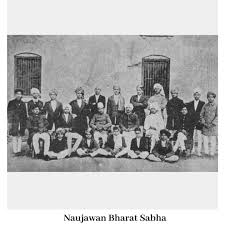NIDHAN SINGH CHUGGHA (1855-1936), a prominent Ghadr leader, was the son of Sundar Singh of the village of Chuggha, in Moga district. A militant revolutionary, he was cited by the British as "art extremely dangerous criminal and one of the worst and most important of the [Ghadr] conspirators." In 1882, Nidhan Singh left home for Shanghai where he worked as a watchman and served as treasurer of the local Gurdwara. He married a Chinese woman from whom he had one son. He lived in Shanghai for many years and then migrated to the United States of America. Shortly after his arrival in the United Ssates, the Ghadr Party was formed by Indian patriots.
BHAGWAN SINGH GYANEE (d. 1962). prominent Ghadr leader, was born the son of Sarmukh Singh of the village of Varing, 15 km east of Tarn Taran in Amritsar district of the Punjab. Their ancestors, Kashmir! Brahmans, had migrated to the Punjab during the seventeenth century. Bhagwan Singh learnt Urdu at the village school and then joined Gurmat Vidyala, a missionary school at Gharjakh, in Gujranwala district, from where he passed the gyani examination. He was employed as a teacher in the Gurmat Vidyala, shifting after a short while to Khalsa School, Daska, in Sialkot district, where he studied Vedanta under Sadhu Har Bilas.
BHAN SINGH (d. 1917), a Ghadr activist, was the son of Savan Singh, of the village of Sunet, in Ludhiana district of the Punjab. As a young man, Bhan Singh migrated to Shanghai and then moved to America where he started taking interest in Ghadr activity. He was among those who returned to India to make Ghadr or armed revolution in the country. Travelling by the Tosa Maru he reached Calcutta on 19 October 1914, but was arrested and interned in Montgomery jail.
BUDDHA SINGH (b. 1891), a Ghadr revolutionary, was son of Ishar Singh of the village of Sursingh, now in Amritsar district. He served in the Mule Battery at Bareilly but deserted and went to Shanghai, where he became a night watchman. He returned to India to take part in the armed revolution planned by the Ghadr Party and arrived in Calcutta aboard the S.S. Namsang on 13 October 1914.




